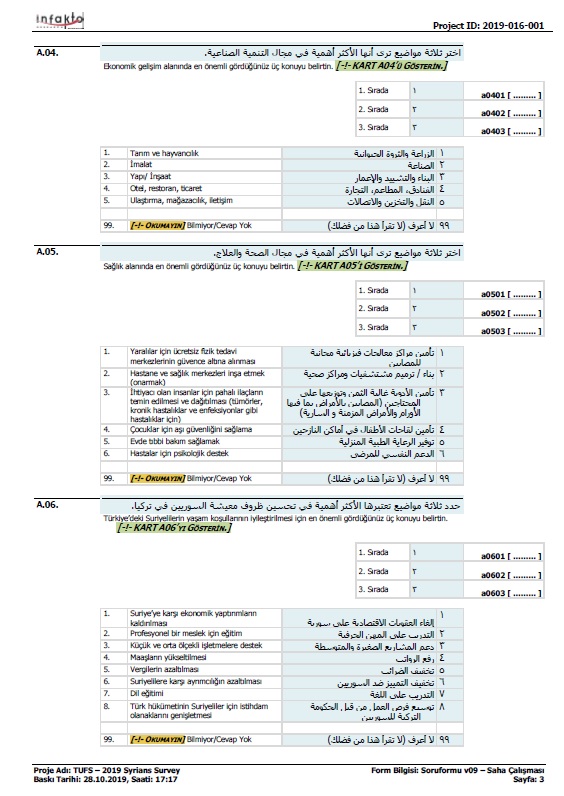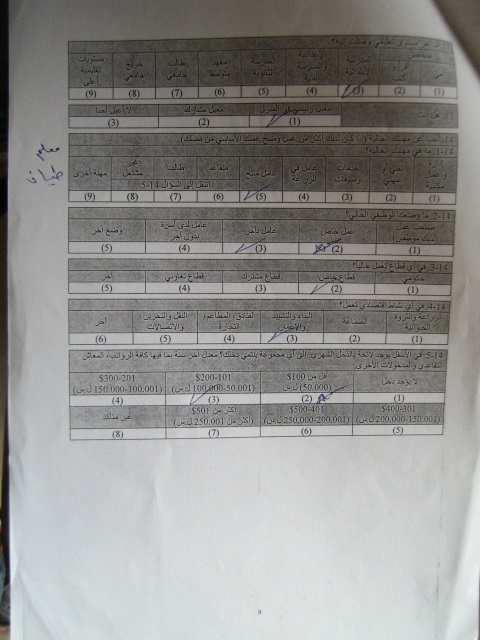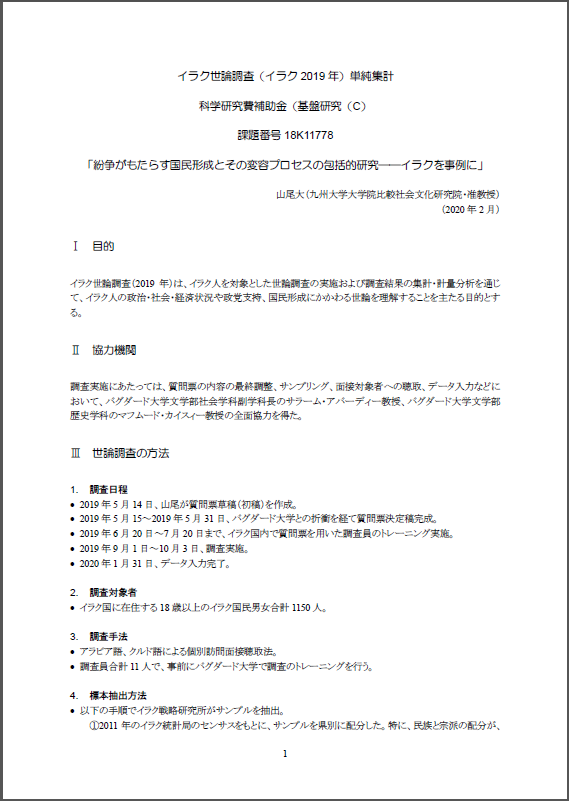Dai YAMAO’s “Report of Simple Tally of Opinion Survey in Iraq” (Grant-in-Aid for Scientific Research (C)18K11778 (2018-2022) “Comprehensive Study on Nation Building Brought by Conflict and Its Transformation Process: Case Study on Iraq“), has been published in Opinion Surveys.
Report of Simple Tally of “Middle East Public Opinion Survey (Syrian Refugees in Turkey 2019)” (CMEPS-J Report No. 52) (English)
 Joint research project “Roles of the Informal Actors in Reconstruction and/or Destruction of the State: Case Studies of the Arab East” has published English new report “Report of Simple Tally of “Midle East Public Opinion Survey (Syrian Refugees in Turkey 2019)”” (CEMPS-J Report No. 51) (PDF / HTML) in CMEPS-J Reports.
Joint research project “Roles of the Informal Actors in Reconstruction and/or Destruction of the State: Case Studies of the Arab East” has published English new report “Report of Simple Tally of “Midle East Public Opinion Survey (Syrian Refugees in Turkey 2019)”” (CEMPS-J Report No. 51) (PDF / HTML) in CMEPS-J Reports.
Hassan Diyab Cabinet in Lebanon (January 21, 2020)
List of Hassan Diyab Cabinet in Lebanon (January 21, 2020) has been published in Country Files.
Report of Simple Tally of “Middle East Public Opinion Survey (Syrian Refugees in Turkey 2019)” (CMEPS-J Report No. 51)
 Joint research project “Roles of the Informal Actors in Reconstruction and/or Destruction of the State: Case Studies of the Arab East” has published Japanese new report “Report of Simple Tally of “Midle East Public Opinion Survey (Syrian Refugees in Turkey 2019)”” (CEMPS-J Report No. 51) (PDF / HTML) in CMEPS-J Reports.
Joint research project “Roles of the Informal Actors in Reconstruction and/or Destruction of the State: Case Studies of the Arab East” has published Japanese new report “Report of Simple Tally of “Midle East Public Opinion Survey (Syrian Refugees in Turkey 2019)”” (CEMPS-J Report No. 51) (PDF / HTML) in CMEPS-J Reports.
Middle East Public Opinion Survey (Syrian Refugees in Turkey 2019)

New page “Middle East Public Opinion Survey (Syrian Refugees in Turkey 2019)” has been launched in Opinion Surveys.
Hiroyuki AOYAMA & Kohei KIDO “Constitutional Committee: Members Announced by UN and Members of Mini-Comittee Appointed on October 30, 2019” (Syria)
Hiroyuki AOYAMA and Kohei KIDO’s Japanese article “Constitutional Committee: Members Announced by UN and Members of Mini-Comittee Appointed on October 30, 2019” (CMEPS-J Report No. 50-2) has been published in Country Files.
Hiroyuki AOYAMA & Kohei KIDO “Constitutional Committee” (Syria)
Hiroyuki AOYAMA and Kohei KIDO’s Japanese article “Constitutional Committee” (CMEPS-J Report No. 50) has been published in Country Files.
Hiroyuki AOYAMA “Whereabouts of Decentralization/Federalism in Syria: al-Asad Administration vs Kurdish Nationalists PYD” (re-recorded)
Re-recorded version of Hiroyuki AOYAMA’s Japanese article “Whereabouts of Decentralization/Federalism in Syria: al-Asad Administration vs Kurdish Nationalists PYD” (CMEPS-J Report No. 49) has been published in Publications.
Yutaka TAKAOKA “Situation of Syrian IDPs and their Perception”
 Yutaka TAKAOKA’s new Japanese article “Situation of Syrian IDPs and their Perception” has been published in Yahoo! Japan News (individual, January 11, 2019).
Yutaka TAKAOKA’s new Japanese article “Situation of Syrian IDPs and their Perception” has been published in Yahoo! Japan News (individual, January 11, 2019).
English version is available here!
Yutaka TAKAOKA “Situation of Syrian IDPs and their Perception”
 Yutaka TAKAOKA’s new Japanese article “Situation of Syrian IDPs and their Perception” has been published in Yahoo! Japan News (individual, January 11, 2019).
Yutaka TAKAOKA’s new Japanese article “Situation of Syrian IDPs and their Perception” has been published in Yahoo! Japan News (individual, January 11, 2019).
English version is available here!

